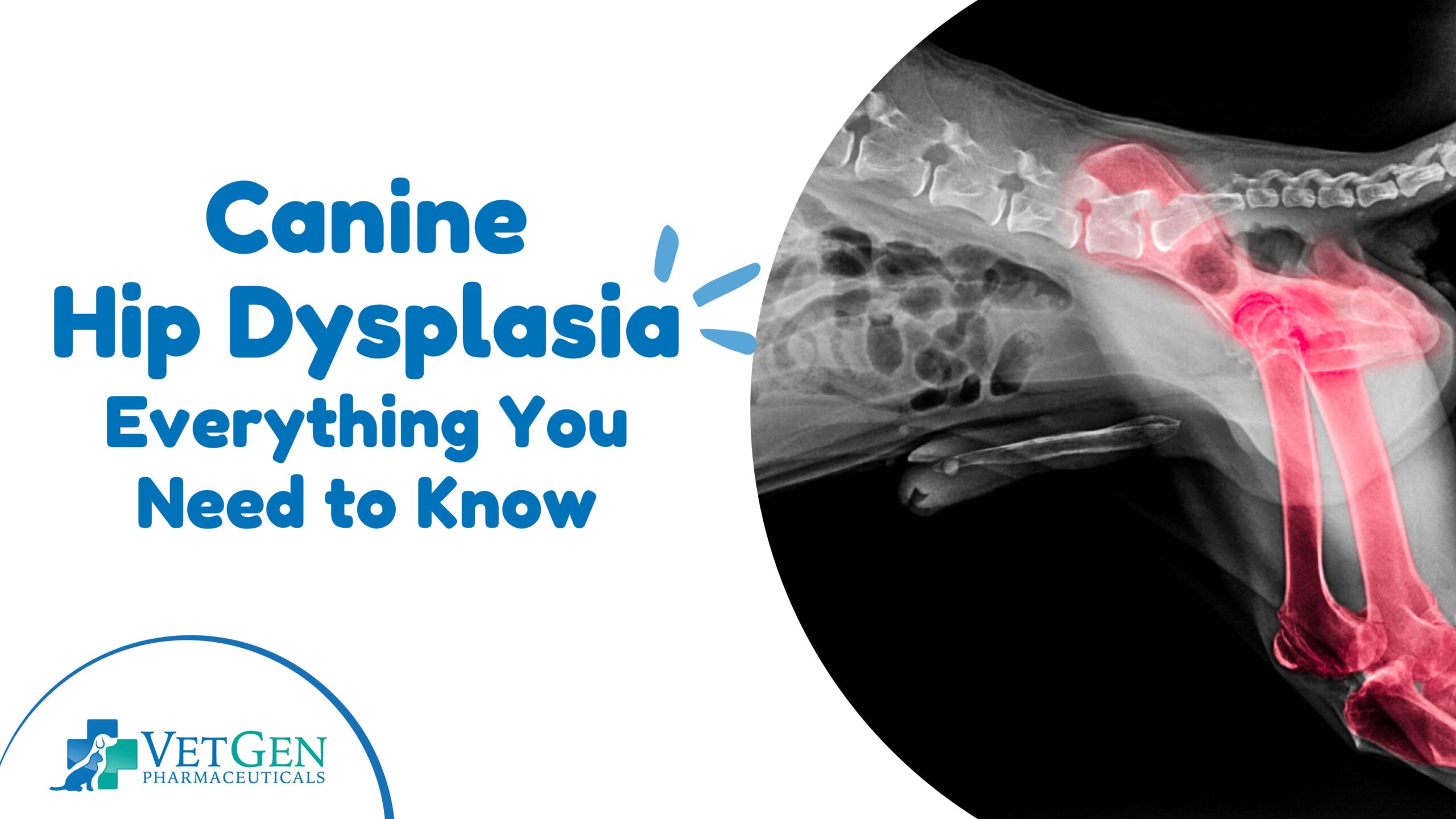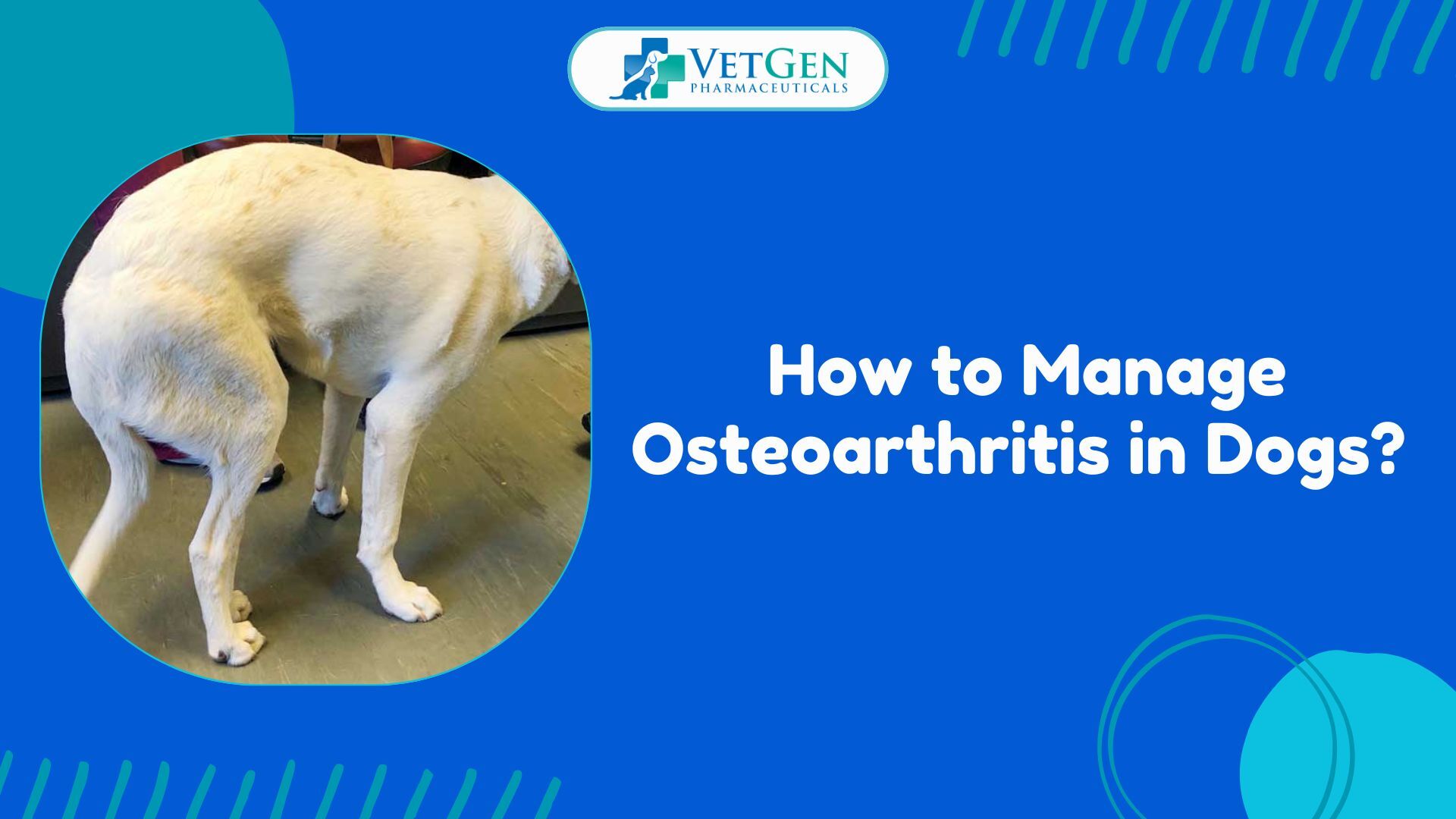Prevention is particularly important to protect your dog from developing painful joint issues and life-changing conditions like canine hip dysplasia. You need to know all the facts about hip dysplasia in dogs from the symptoms, prevention measures, treatments, and everything in between for you to protect your furry friend more effectively. Here is everything you need to know about canine hip dysplasia.
What is Canine Hip Dysplasia?
As the name suggests, canine hip dysplasia is a painful skeletal condition in dogs that affects the functions of the hip joint.
This debilitating condition occurs when the ball at the top of the femur or thigh bone does not fit perfectly into the socket on the pelvis, which can lead to grinding when your dog walks or runs around.
If left unattended, the grinding of the ball and socket can wear down the bones on your dog’s hip joint area.
The deterioration of the bones over time will eventually result in the loss of function of the hip joint.
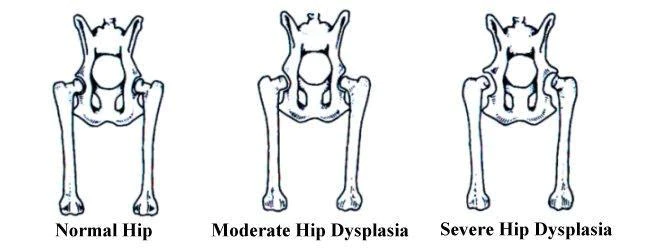
While canine hip dysplasia is more common amongst larger dogs, it can also affect smaller breeds. Some dogs can start showing signs of hip dysplasia when they are only a few months old if their hip joint did not develop properly.
On the other hand, a minor misfit of the ball and socket may not lead to hip dysplasia until later in life. In some cases, hip dysplasia in older dogs is catalyzed by osteoarthritis.
Symptoms of Canine Hip Dysplasia
The main signs of hip dysplasia to watch out for include decreased activity or range of motion, lameness in the hind end, and reluctance to stand, jump, or run.
If your furry friend loved to run up and down the stairs but is now more reluctant, you should investigate because hip dysplasia is painful and can make it difficult for them to climb stairs.
These symptoms may vary depending on the severity of the condition, which is why some dogs show symptoms earlier or later than others.
You should also watch out for any swaying, limping, grating joints, pain, stiffness, or loss of thigh muscles.
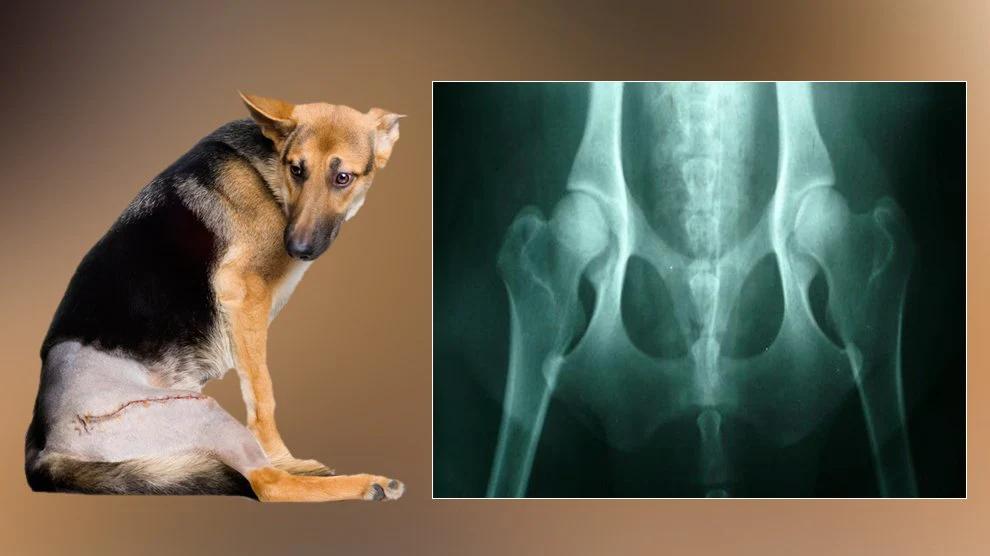
The severity of the symptoms of canine hip dysplasia is also influenced by the duration of the condition.
As your dog ages, mobility issues can increase.
The degree of looseness in the joint, as well as the level of inflammation, can also influence how the symptoms manifest.
Looking out for these symptoms and the factors that influence the severity of the condition can give you some time to get the situation under control before it worsens.
What Causes Hip Dysplasia in Dogs
Understanding the factors that increase the risk or contribute to the development of canine hip dysplasia is the most effective way to anticipate and prevent this condition.
The main risk factors include genetics, nutrition, excessive growth rate, types of exercise, and improper weight.
Genetics
Hip dysplasia is hereditary, which makes genetics a major factor in the development of hip dysplasia in dogs.
Genetics plays a bigger role in the development of canine hip dysplasia among giant dog breeds like Shepherds, Danes, Retrievers, and Newfoundland’s.

Nutrition
Nutrition can also magnify genetic predisposition and increase the risk of developing hip dysplasia in dogs.
The role of nutrition in hastening hip dysplasia is common in young puppies of larger breeds since they require a special diet to support their growth.
If the nutrition induces an excessive growth rate, the puppy can gain weight faster than the pace of bone development.
It increases the risk of developing hip dysplasia and other skeletal disorders and joint conditions.
Rigorous Exercises
Any rigorous exercise routine that pushes your dog’s joints beyond natural limits can interfere with how the ball fits into the socket.
Pushing your pal through rigorous exercise routines can lead to grinding of the bones instead of sliding smoothly.
Avoid extremely rigorous exercises to reduce the risk of developing hip dysplasia.
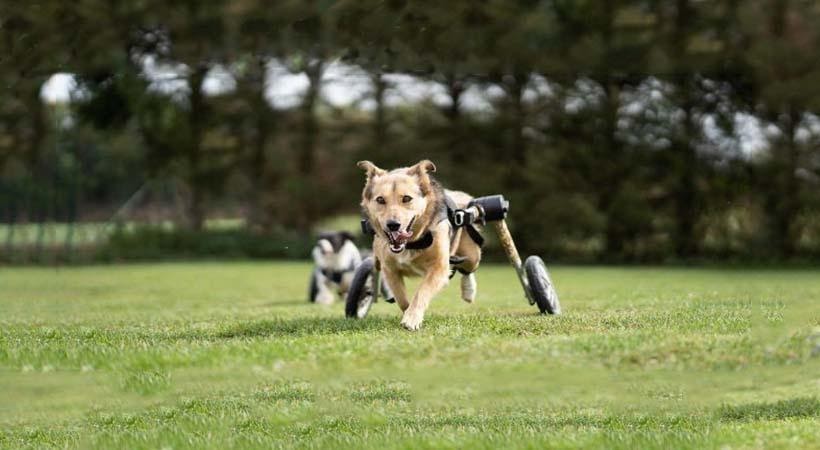
Improper Weight
Obesity will put too much pressure on your pal’s limbs. It can strain their joints and increase the likelihood of developing hip dysplasia.
If your dog has already developed mild hip dysplasia, improper weight can exacerbate and worsen the situation further.
How to Prevent Canine Hip Dysplasia
Prevention is the most effective approach to protect against skeletal conditions like hip dysplasia that can undermine your dog’s mobility.
Based on the causes of hip dysplasia in dogs, you should focus on mitigating risks related to genetics, nutrition, and weight.
1. Monitor and Manage Your Dog’s Weight
Overweight or obese dogs of all ages are at higher risk of developing canine hip dysplasia.
You can protect your buddy from serious implications by monitoring their weight regularly to avoid any surprises.
Check whether your puppy is overweight by placing your palms on either side of their chest.
Then, press down lightly to assess the level of fat accumulation based on the depth of their ribs.

If you cannot feel your pup’s ribs, you should consider reducing the amount of food per serving by 10%.
You should also reevaluate the amount of formulated food you feed to slow down your pup’s growth.
Moderate growth will allow their joints to develop properly without being strained by too much weight.
Joint supplements can also strengthen the bones as your pup grows.
2. Improve Your Dog’s Diet
Dog foods that are rich in essential minerals, vitamins, and proteins can promote and protect your dog’s healthy bones and joints.
Vets recommend food sources that are rich in Glucosamine to help reduce risks of developing hip dysplasia.
You can also use joint supplements with Glucosamine to address the problem directly.
Always feed your pal the best foods for joint care that contain salmon, turmeric, calcium, and other ingredients to enhance fluid viscosity and tissue pliability.
Salmon oil can lubricate your dog’s joints, enhance flexibility, and improve their mobility.
3. Supplement to Improve the Health of Bones and Joints
Supplementation is usually used by vets for a comprehensive intervention, prevention, or treatment plan in a wide range of skeletal conditions, including hip dysplasia.
You can use hip and joint supplements for dogs that contain ingredients like Glucosamine to protect your dog’s mobility.
Glucosamine is renowned for its ability to boost the production of synovial fluid, which lubricates dogs’ joints.
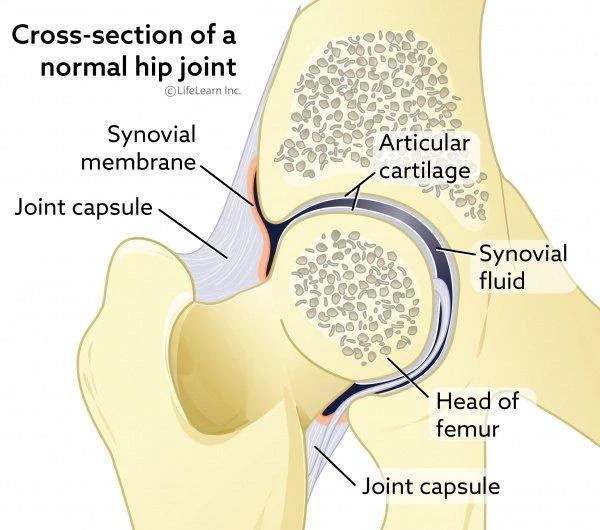
Ingredients of joint supplements like calcium and other essential minerals can promote your dog’s bone health and joint functions.
Supplementation can help meet your dog’s nutritional needs and also contain ingredients that reduce inflammation or any discomfort during movement.
With the best joint supplement for dogs, you have a more targeted solution to improve your dog’s bone health and prevent canine hip dysplasia in the long term.
4. Maintain Regular Exercises
Treating Canine Hip Dysplasia
The appropriate treatment options for canine hip dysplasia depending on the severity of the condition.
Your vet can recommend lifestyle modifications or non-surgical treatments like physical therapy, joint supplements, anti-inflammatory medications, or joint fluid modifiers if your dog’s hip dysplasia is not severe.
These treatment options are a great fit if your dog is not a candidate for surgery due to medical or financial reasons.
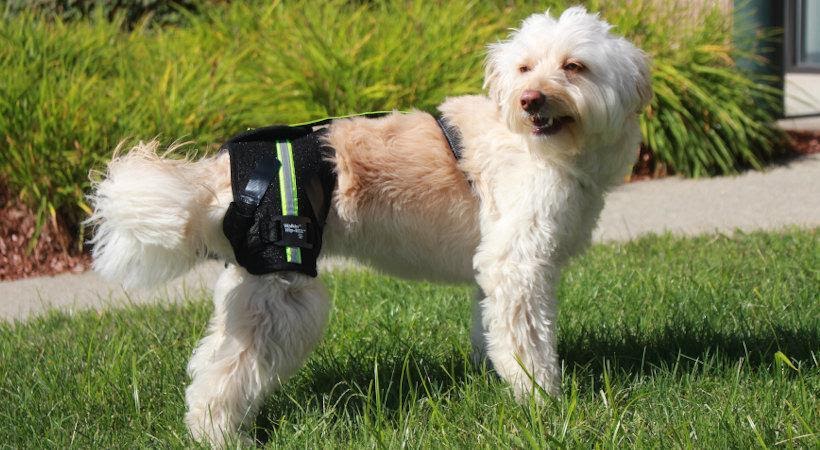
Dogs displaying severe symptoms of hip dysplasia may require surgery to correct the problem. It is the last resort after all other measures have failed to deliver results.
Your vet can recommend either minor or major surgery, depending on the severity of the case. The most common surgical strategies include double or triple pelvic osteotomy (DPO/TPO), reshaping of the ball on the thigh bone (femoral head osteotomy), or total hip joint replacement (THR).
Whether your dog undergoes surgical correction or you use nonsurgical treatment options, these treatment options will ensure your dog regains their mobility within a short period. You and your buddy will enjoy your bonding time comfortably well into old age.
At VetGen Pharmaceuticals, we are dedicated to enhancing the quality of your dog’s life. We offer the best joint supplement for dogs to ensure your dog maintains an active lifestyle so you can enjoy each other’s company for many years to come! Our hip and joint supplement for dogs is made from the best and safest ingredients.
Each product offered by VetGen Pharmaceuticals is made from the best and safest ingredients in an FDA registered facility right here in the US! Please reach out to us if you have any questions!

